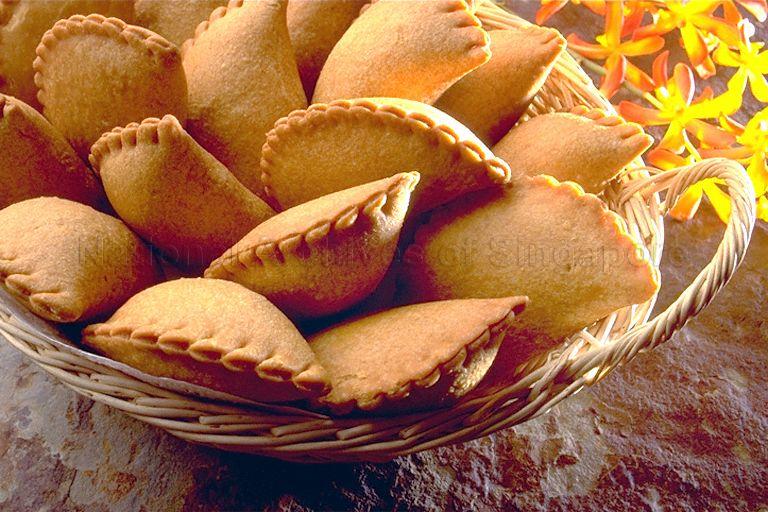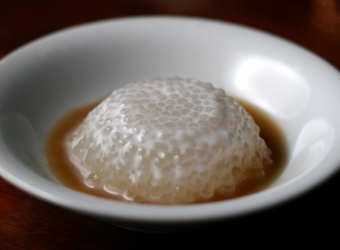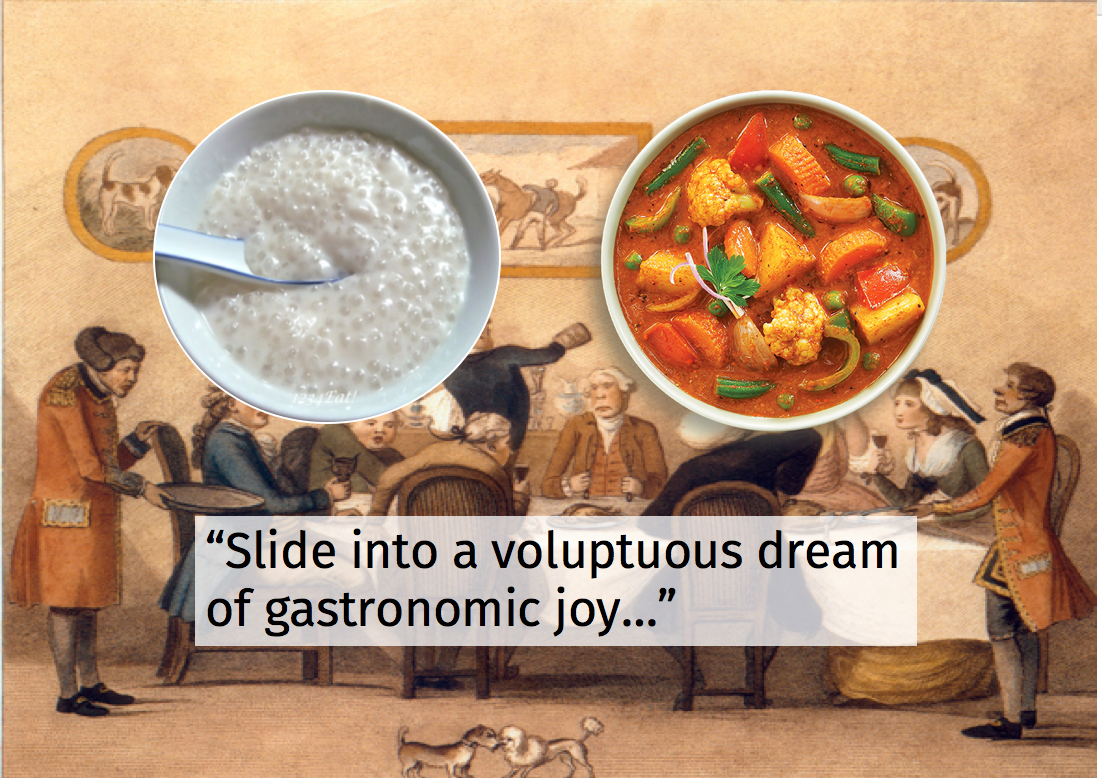It is no secret that Singapore is a food paradise because of the multiple cultures that co-exist on our shores.
It is no surprise too that our local cuisine is derived from various influences. Even when we were under the British, there were already signs of food hybridity.
While some may have the misconception that the British ate completely different things from the locals, Cecilia Leong-Salobir's Food Culture in Colonial Asia: A Taste of Empire tells us that this is not true.
Her book is filled with the accounts of colonial residents documenting the food they ate when they were in Southeast Asia, Singapore included.
According to her, the British did hold on to their "comfort foods" of roast beef and puddings. However, there was also evidence to suggest that local food and ingredients greatly influenced these angmohs' cuisine.
One practical reason for this merger of foods was that meals were limited by ingredients available locally. Additionally, their servants, who were usually Asian, often modified recipes to suit what they thought was their colonial masters' (or even their own) tastes.
What resulted were various dishes that became staples in colonial cuisine.
Curry all day err day
Curry and rice was often a staple in the colonial angmohs' homes. They would have it for both lunch and dinner.
The British's fascination with curry actually began in India, way before they came to Southeast Asia, so their continued love for it comes as no surprise (even in the present day).
Curry dishes were popular because they were both tasty and practical. The dish could make use of abundant local meats (usually fish or chicken), and the spices helped to preserve the meat, preventing it from going bad quickly in our hot weather.
The curry puff
Curry was so well-liked that it was adapted into a snack. The curry puff was born in colonial Southeast Asia through the modification of the Indian samosa.
 Photo from NAS
Photo from NAS
According to an account by Lillian Newton who grew up in Singapore in the 1890s, curry puffs were a favourite for gatherings:
"...the oriental cousin of our sausage rolls but much nicer! Cookie made curry puffs also and they were a stand-by for picnics and parties."
They're still a favourite today, actually.
Curry powder
The British liked their curry dishes, and it shows up in the prevalence of curry dishes in the different variations served in their colonial homes.
But it didn't stop at dishes alone. They liked it so much the British decided to invent and commercialise curry powder. According to Leong-Salobir:
"(They) gathered the types of spices required for a curry, configured the proportions according to their ideals of a curry and called it their own."
[caption id="" align="aligncenter" width="288"] Image via[/caption]
Image via[/caption]
Curry powder eventually became popular in Britain and coffee houses in London started featuring curry on their menus as a result.
Curry and curry powder was like their opium.
[related_story]
Sago pudding
No dinner in the colonial angmoh's household is complete without dessert (although these days it's pretty much the same everywhere).
The most famous colonial dessert during at that time was caramel custard. However, the availability of sago in Singapore transformed the timeless European pudding into the familiar local dessert -- Sago pudding.
Sago was made to a jelly, and gula Melaka (palm sugar syrup) and coconut milk was poured all over it.
 Photo from Asian Supper
Photo from Asian Supper
While delectable, sago pudding with gula Melaka had its down sides:
"Gula Melaka was delicious, but it was far too rich a sweet to eat on top of a big plateful of curry and rice with all the trimmings."
Nonetheless, this glowing review given by an Australian tin miner says it all:
"[T]o eat this dainty is to forget one’s troubles and to slide into a voluptuous dream of gastronomic joy."
Unfortunately, unlike its curry counterpart, this dessert never caught on in Britain or Europe.
Even though colonial residents were of different cultural backgrounds than that of the locals, food was where different cultures could intersect.
Top photo adapted from History.org, Conceito & Tata Sampann.
Some historical references in this article were shared with us by OH! Open House.
If you like what you read, follow us on Facebook, Instagram, Twitter and Telegram to get the latest updates.
